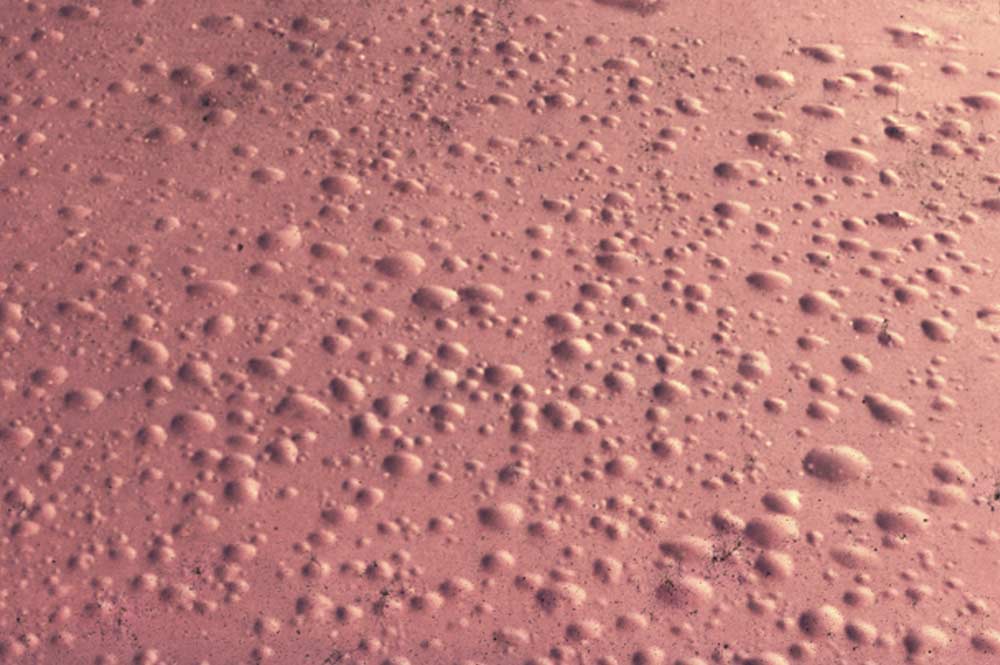Blistering
Blistering is the process of forming dome-shaped blisters or projections on the surface of dry paint. These blisters can contain liquid, gas, or be dry. Osmotic blistering occurs when soluble salts, pigments, retained solvents, or water-miscible solvents are present.
Non-osmotic blistering, also known as cathodic blistering, typically occurs in a circular pattern around a coating defect where the underlying surface is exposed. Cold wall conditions can also lead to non-osmotic blistering through condensation.
To provide more detailed information, an interactive visualisation tool called Coating Radar Details is available. It offers correlation tables, information on blister sizes, videos, insights on blister formation, and a brief overview of ISO 4628-2. The tool also includes information about fluid collection within the blisters.
